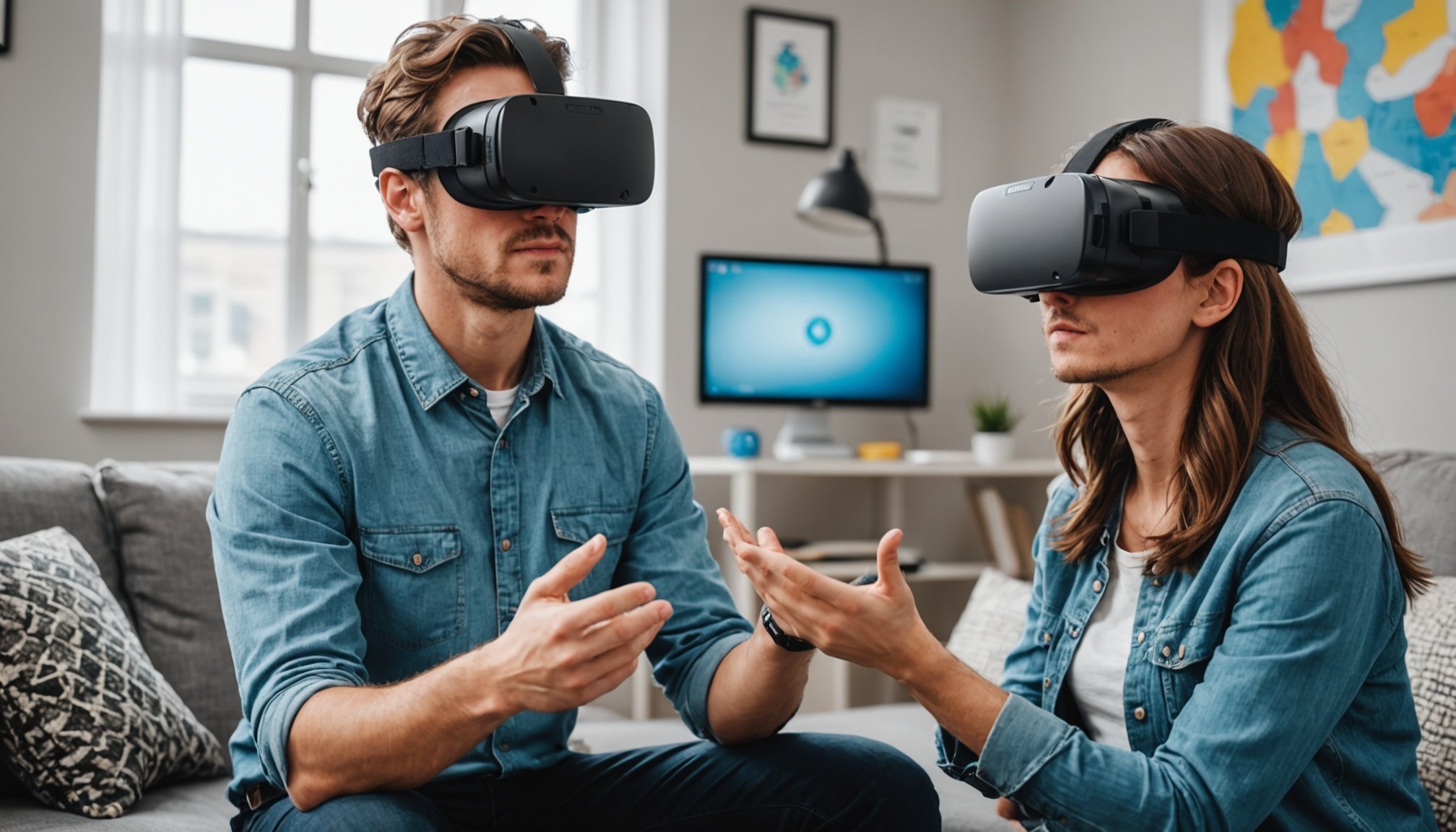Overview of Virtual Reality in Mental Health Therapy
The integration of Virtual Reality in mental health therapy has undergone significant transformation over the past few decades. Originally an innovation mostly seen in gaming, its use has expanded into therapy settings to create immersive and interactive experiences. By early 2000s, it became evident that VR could simulate environments and scenarios beneficial for therapeutic purposes, offering exposure therapy or simulating social interactions in a safe and controlled manner.
One of the key benefits of incorporating therapy games into mental health sessions is heightened client engagement. These games offer immersive environments that keep clients focused, making therapeutic exercises feel less clinical and more enjoyable. They can help clients practice social skills, confront fears, or develop coping strategies in virtual settings that mimic real-world situations, thus reducing anxiety when facing similar situations in real life.
Topic to read : Transforming Open-World Environments: Essential Techniques for Game Developers to Enrich Vegetation in Adventure Gaming
However, the challenge lies in selecting appropriate VR therapy games. Considerations must include understanding the specific therapeutic goals, the client’s individual needs, and technological compatibility. Games should be tailored to promote client progress without overwhelming them. When selecting, practitioners should ensure the games align with therapeutic objectives and respect client boundaries.
Essential Safety Protocols
When implementing VR therapy, practitioners need to adopt foundational safety protocols to ensure client well-being. These measures form the backbone of a safe and therapeutic VR environment. First, establishing informed consent is crucial. Clients must be fully aware of what the VR sessions entail and possess the autonomy to make decisions regarding their participation. Respecting client autonomy enhances trust and encourages open communication, which is vital for effective therapy.
Also to discover : Maximizing Fear Factor: Harnessing Advanced Audio Techniques for Unparalleled Immersion in Horror Gaming
Selecting safe physical spaces for VR sessions is paramount. Practitioners should ensure that these spaces are free from trip hazards and other physical risks associated with VR equipment. Arranging furniture thoughtfully and maintaining clear areas can prevent accidents and allow clients to move freely during sessions.
Physical safety is only one aspect of a comprehensive approach to VR therapy. Continuous education and development opportunities for practitioners can sharpen the skills needed to navigate complex therapy scenarios, bolstering confidence and competence. Ultimately, prioritising safety through detailed guidelines fosters a therapeutic environment in which clients feel secure, respected, and empowered to engage fully in their therapeutic journey.
Risk Management Strategies
In the realm of Virtual Reality within mental health therapy, managing risks is critical. Practitioners need a comprehensive plan to ensure both emotional and physical client safety. This includes being proactive in identifying potential risks which could arise during therapy sessions. These risks might be physical, such as injury from VR equipment, or emotional, potentially causing distress due to overwhelming virtual experiences.
To grasp individual needs and limitations, assess each client’s history and condition regularly. Ongoing assessment allows for necessary adjustments to therapy plans, maintaining safety and efficacy. Mitigating equipment risks involves ensuring hygiene and apparatus functionality before each session. Incorporating safety protocols, such as seatbelts for chairs used during VR, could prevent accidents.
The potential for adverse emotional reactions requires strategies for calming clients. Techniques such as gentle reminders of reality and adjustable session durations may be beneficial. Establishing personalised safety plans is also vital, outlining procedures for varying emergency scenarios. Having structured emergency protocols also means practitioners can swiftly and effectively manage unforeseen emergencies, ensuring clients receive the support they need promptly. This framework fosters a secure, supportive environment conducive to therapeutic progress.
Case Studies and Best Practices
Implementing VR therapy games has transformed mental health intervention through successful real-world examples. These cases offer insightful best practices and serve as valuable guides for practitioners. In one noted case, a therapist embedded VR scenarios for social anxiety clients. By simulating group interactions, clients practiced skills in safe environments, resulting in improved social fluency.
Lessons learned highlight the significance of adaptive and client-centric approaches. For instance, regular feedback allowed practitioners to tailor VR experiences to match evolving therapeutic needs effectively. Additionally, proactive adjustments ensured VR sessions aligned with clients’ comfort levels.
Essential safety protocols emerged as crucial during implementation. In a study, practitioners attributed positive outcomes to meticulous pre-session equipment checks and maintaining clear communication lines with clients. Constant vigilance reduced both technical glitches and emotional distress, reinforcing the holistic safety strategy.
Key takeaways for practitioners involve emphasizing informed consent and integrating cultural competence in VR game selection. Customising experiences to resonate with diverse cultural backgrounds enriches therapeutic value. By incorporating these insights, practitioners can enhance VR therapy practices, ultimately fostering environments where clients feel understood and supported in their therapeutic journeys.
Ethical Considerations in VR Therapy
Virtual Reality offers innovative avenues in mental health interventions, yet it’s crucial to address ethical concerns. The primary focus is on consent and privacy, ensuring clients fully understand and agree to the implications of VR games used in therapy. Practitioners must navigate informed consent with precision, explaining how data is collected and utilised.
When utilising VR games, balancing zest for technological innovation with paramount client welfare is imperative. The ethical challenge lies in ensuring that the excitement of VR advancements doesn’t overshadow clients’ mental and emotional well-being. Consistent reflection and adaptation are key.
The significance of cultural competency cannot be overstated. It’s vital to ensure VR games reflect clients’ cultural backgrounds, enhancing therapeutic interaction. This involves selecting or customising VR content that clients can relate to within their cultural context. By doing so, practitioners not only adhere to ethical standards but also enrich the therapeutic process, making it more inclusive and effective.
Ethical considerations compel practitioners to prioritise client dignity and respect while integrating cutting-edge technologies, thus supporting sound therapeutic frameworks. The commitment to these principles fosters trust and efficacy in mental health interventions through VR therapy.
Resources for Practitioners
VR Therapy practitioners need access to comprehensive resources to ensure effective and safe practices. Practical checklists are invaluable in implementing safety protocols within VR therapy sessions, guiding practitioners through essential steps such as verifying equipment functionality and confirming emergency procedures. These checklists act as a preparatory framework, ensuring that all necessary precautions are taken to safeguard client well-being.
Additionally, continuous training resources and professional development opportunities are crucial. Engaging in workshops and courses designed specifically for VR therapy equips practitioners with up-to-date knowledge and techniques, enhancing their proficiency and confidence. This ongoing education helps practitioners stay abreast of the latest technological advancements and therapeutic methodologies, enabling them to provide optimal care.
Further support is available through various practitioner networks and communities focused on VR therapy. These platforms offer spaces for professionals to share experiences, exchange advice, and collaborate on tackling challenges. By actively participating in these communities, practitioners benefit from shared knowledge and collective expertise, fostering a supportive environment conducive to professional growth and improved client outcomes. This collaborative approach enhances the overall effectiveness of VR therapy interventions in mental health settings.











